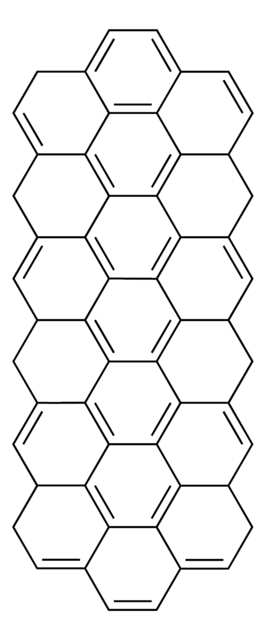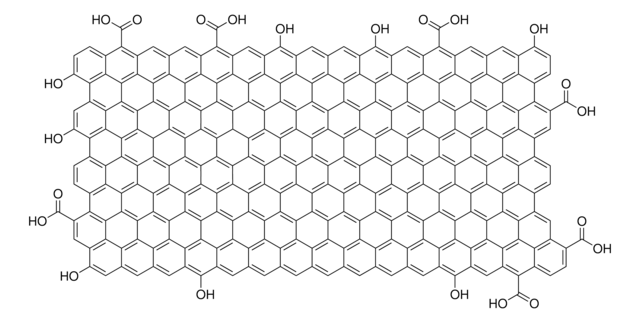797774
Graphene nanoribbons
About This Item
Productos recomendados
assay
≥90.0% carbon basis (TGA)
form
powder
L × W
2-15 μm × 40-250 nm
density
2.2745 g/mL (He gas method)
bulk density
0.0970 g/mL (Mercury Porosimetry)
¿Está buscando productos similares? Visita Guía de comparación de productos
General description
Application
- Composites.
- Conductive inks.
- Electrodes for LiB.
- Energy storage & harvesting applications.
- Bio-medical applications.
- Preferred dispersing organic solvents: pyrrolidones and chlorinated solvents.
- Less preferred dispersing organic solvents: cyclohexanone and γ-butyrolactone.
- Aqueous dispersions are possible at 0.1mg/mL with triton-X-100, sodium cholate and deoxycholate and cellulose-based surfactants.
Analysis Note
ID/IG = 0.65±0.07
I2D/IG = 0.74±0.03
2D FWHM = 63 cm-1
Legal Information
signalword
Danger
hcodes
Hazard Classifications
Carc. 2 - Repr. 2 - STOT RE 1 Inhalation
target_organs
Lungs
Storage Class
6.1C - Combustible acute toxic Cat.3 / toxic compounds or compounds which causing chronic effects
wgk_germany
nwg
Certificados de análisis (COA)
Busque Certificados de análisis (COA) introduciendo el número de lote del producto. Los números de lote se encuentran en la etiqueta del producto después de las palabras «Lot» o «Batch»
¿Ya tiene este producto?
Encuentre la documentación para los productos que ha comprado recientemente en la Biblioteca de documentos.
Artículos
Graphene is a unique two-dimensional (2D) structure of monolayer carbon atoms packed into a dense honeycomb crystal that has attracted great interest due to its diverse and fascinating properties.
Graphene's unique properties spark interdisciplinary interest; its honeycomb structure offers electrical, optical, and mechanical marvels.
Since its discovery little more than a decade ago,1 the two-dimensional (2D) allotrope of carbon—graphene—has been the subject of intense multidisciplinary research efforts.
Graphene nanoribbons (GNRs) are quasi-one-dimensional narrow strips of graphene comprised of sp2-hybridized carbon atoms arranged into hexagonal honeycomb lattice configurations.
Nuestro equipo de científicos tiene experiencia en todas las áreas de investigación: Ciencias de la vida, Ciencia de los materiales, Síntesis química, Cromatografía, Analítica y muchas otras.
Póngase en contacto con el Servicio técnico







